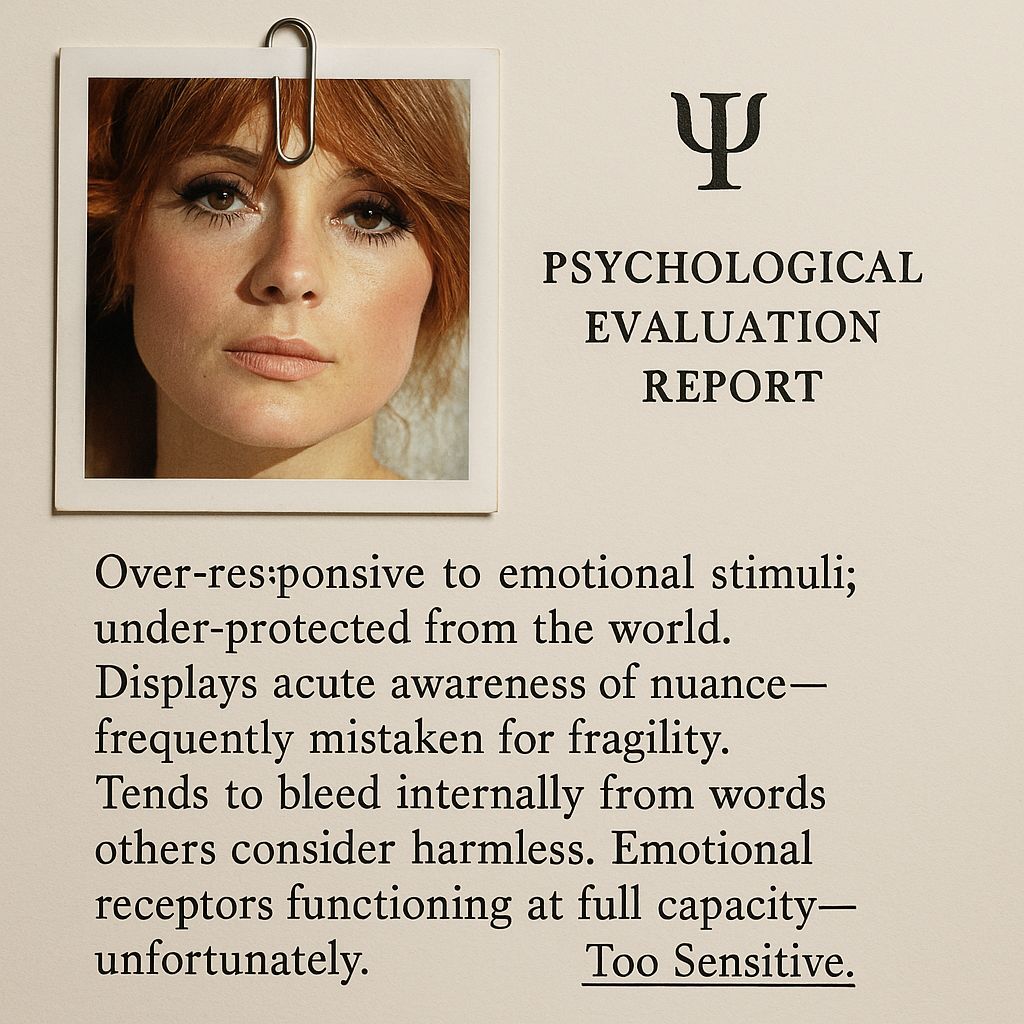
The Astrological Neptune: Dream Within a Dream
 Liz Greene’s The Astrological Neptune and the Quest for Redemption is a book that feels less like reading and more like dissolving into the unconscious. Neptune always evades direct confrontation, preferring to communicate through dreams, fantasies, and longings. And Greene, with her Jungian depth and astrological analysis, manages to map these choppy waters. The fact that she wrote this during a Uranus-Neptune conjunction is fascinating. Uranus, the great awakener, aspecting (or perhaps dissolving into an opium haze) with Neptune, the dreamweaver, means that this book was channeled from the archetypal depths. Neptune’s domain is both enchanting and treacherous. It’s where we seek transcendence but risk delusion. It’s where we long for redemption but might find ourselves lost. Her examination of Neptune in the personal and collective psyche reveals why we chase dreams, suffer from illusions, and yearn for a unity that often slips through our fingers like water.
Liz Greene’s The Astrological Neptune and the Quest for Redemption is a book that feels less like reading and more like dissolving into the unconscious. Neptune always evades direct confrontation, preferring to communicate through dreams, fantasies, and longings. And Greene, with her Jungian depth and astrological analysis, manages to map these choppy waters. The fact that she wrote this during a Uranus-Neptune conjunction is fascinating. Uranus, the great awakener, aspecting (or perhaps dissolving into an opium haze) with Neptune, the dreamweaver, means that this book was channeled from the archetypal depths. Neptune’s domain is both enchanting and treacherous. It’s where we seek transcendence but risk delusion. It’s where we long for redemption but might find ourselves lost. Her examination of Neptune in the personal and collective psyche reveals why we chase dreams, suffer from illusions, and yearn for a unity that often slips through our fingers like water.
This is a vast and immersive exploration of the deepest currents of the human psyche. To read it is to be pulled under by an oceanic force, one that doesn’t offer the comfort of solid ground but instead asks you to surrender, to drift, to dissolve into the ineffable. Neptune dissolves boundaries, offering the promise of unity with something greater, yet that same dissolution can lead to confusion, addiction, self-sacrifice, and deception. Perhaps that is the true nature of Neptune—to never be fully grasped, only intuited, felt in moments before slipping away again, leaving us always searching, always longing, always on the quest for redemption.
To drift toward Neptunian waters is a kind of necessary reprieve, a recognition that life cannot be endured solely through the rational. There is an ache in the human soul, a longing for something beyond the material, a yearning to dissolve into something greater. Greene’s exploration of Neptune taps into this ache, revealing how it manifests in art, in spirituality, in romance. The same force that inspires poetry and devotion can also lead to self-sacrifice, delusion, and loss.
Water, as a symbol, is at the heart of this book’s message. It is both healing and destructive, a source of renewal and a force of obliteration. It purifies, cleanses, washes away the burdens of existence, yet it also drowns, erodes, and dissolves boundaries until nothing remains of what once was.
A Feminine Force
In this work, Greene reimagines Neptune as a feminine force, which is a subtle yet radical shift, one that challenges long-standing archetypal myths within astrology. Traditionally, Neptune has been linked to Poseidon, the tempestuous god of the sea, whose power is both generative and destructive, capable of stirring the waters of the unconscious into storms or stillness. Yet, Greene suggests that this framing limits our understanding of Neptune’s true nature. By shifting the image from a masculine deity to a goddess—a force of receptivity, intuition, and boundless compassion—she invites us to experience Neptune in a way that feels more organic, more in tune with its dissolving, all-encompassing qualities.
Whereas the masculine archetype often emphasizes conquest, dominion, and forceful transcendence, a feminine Neptune moves towards surrender, receptivity, and communion with the unseen. This is not the surrender of weakness, but trust in the currents of the unknown, in the intuitive understanding that emerges when control is relinquished. Greene’s vision of Neptune as a goddess aligns with the ocean’s rhythms, its vast, uncontainable essence that does not seek to dominate but to absorb, to merge, to dissolve boundaries in a way that is both creative and mysterious.
Neptune’s influence is often misunderstood because it does not operate in the direct, assertive ways we associate with masculine power. It moves through dreams, through feelings, through the subtle and the symbolic. It seduces rather than demands. It opens doors that logic cannot unlock. By moving towards a feminine perspective, it highlights Neptune’s connection to the deeply feeling aspects of existence that have often been marginalized in favor of more concrete ways of knowing.
To view Neptune as a goddess is to see it as a force of divine longing, a mother of the unseen, a keeper of secrets, a guide through the shifting landscapes of the soul. It is the voice in the waves, the dream that lingers upon waking, the pull toward something vast and unknowable. It does not command—it calls, softly, insistently, leading us deeper into the mysteries of ourselves.
The Unknowable Ocean
Neptune has long been associated with divine longing, mysticism, and an almost intoxicating sense of surrender—but the sea is not only a place of reverie. It is also vast, unknowable, and merciless. To be drawn into Neptune’s realm is to enter a space where the edges of the self dissolve, where consciousness gives way to somethin inexplicable, where the dreamlike can just as easily become the nightmarish.
Greene connects Neptune to sharks, to something predatory lurking beneath the waves, revealing to us that surrender is not always safe. The ocean is beautiful, but it is also terrifying in its depth, its indifference, its ability to consume without remorse. To float too far from shore is to risk being lost entirely, and Neptune, for all its transcendent qualities, does not always distinguish between salvation and destruction.
This darker side of Neptune is often overlooked in favor of its more redemptive aspects, yet it is a powerful part of its nature. Neptune inspires dreams, but it also dissolves boundaries, erodes certainty, lures us into illusions that can be comforting or devastating. The sea, after all, is also home to creatures that lurk in the deep, unseen forces that can pull us under. The same current that carries us toward enlightenment can also drag us into the abyss. The sea’s surface may glitter with divine beauty, but its depths remain unknowable, and what waits below may not always be benevolent.
The Flickering Sense of Reality
Neptune in astrology is like a veil of mist settling over consciousness, rendering the world uncertain, mutable, and strangely luminous. Under Neptune’s spell, the mind is drawn into a space where the world softens, where reality itself flickers, like moonlight dancing on the surface of an undulating sea. The questioning of reality that Neptune induces is experiential. It is the feeling of déjà vu that lingers too long, the dream that bleeds into waking life, the sensation that something is slipping through your fingers just as you begin to grasp it. In this Neptunian haze, one begins to suspect that life itself may be a grand illusion, a projection. The world takes on the quality of a mirage—beautiful, shimmering, but forever just out of reach.
This dissolution of boundaries between waking life and dreamscape is at the core of Neptune’s influence. The rational mind, so dependent on clear distinctions, finds itself adrift, struggling to anchor itself in something solid. But solidity itself becomes suspect. If reality is a series of perceptions filtered through the mind, then what is real? Are we dreaming ourselves into existence? Are we living in the memory of something forgotten? Is this moment a waking state, or another layer of the dream? Neptune does not provide answers. It only deepens the mystery, leading us further into the realm where the walls themselves shift and dissolve. The concept of a dream within a dream—an illusion wrapped in another illusion—becomes not a musing but an astrological reality.
This is the domain of the subconscious, where rational thought is no longer the ruling force. The world begins to shimmer with ambiguity, making everything feel slightly unreal. Neptune does not simply blur the edges of consciousness—it invites one to question whether those edges ever truly existed. Reality itself becomes elastic, stretching and warping in response to the mind’s expectations, fears, and desires. What was once firm and tangible now feels malleable, shifting under the weight of contemplation. In this Neptunian state, one may begin to wonder: Is existence a realm of subjective experiences masquerading as truth? If perception is all we have, and perception is mutable, then where does reality begin and illusion end?
Neptune’s lesson is both beautiful and unsettling: reality is not fixed. It bends and breathes, it responds to the gaze that seeks to define it. Whether this is liberating or disorienting depends entirely on how one surrenders to the tide. To fight Neptune’s pull is to risk drowning in uncertainty, but to float with it is to glimpse something beyond the ordinary—a fleeting vision of the infinite, shimmering just beneath the surface of perception.
An individual life is nothing more than a dream among many, dreamt by the cosmic sea; and the events of that life are the emanations of her substance, just as we believe our own dreams arise from the human brain. An individual death is thus only the end of a dream. Just as a psychologically sophisticated Western person might sift through a dream to distill its meaning, forgetting the images once the essence has been gleaned, so the cosmic sea draws the essential meaning from the dream of a human life which is quickly forgotten.The Astrological Neptune and the Quest for Redemption
The Fashion Icon
Liz Greene also explores Neptune’s influence on fashion. It is both playful and enlightening, revealing how style itself is not simply a collection of arbitrary trends but a reflection of something far more elusive—something dreamlike, collective, and strangely inevitable. Fashion, like Neptune, is fluid, unpredictable, and often irrational. It moves in waves, sometimes carrying us toward beauty and transcendence, other times sweeping us into absurdity, leaving us with photographic evidence of hairstyles and outfits we’d rather forget.
The imagery she evokes—shoulder pads wide enough to take flight, mullets oscillating between rebellion and regret, the reckless abandon of ripped jeans—paints a picture of Neptune as a trickster, delighting in pushing aesthetics to their most extreme, most theatrical, most baffling expressions. But beneath the sequins and synthetic fabrics, there is something deeper at play. Neptune, as the great dissolver of boundaries, seeps into the collective unconscious, shaping our view of beauty, art, and identity. The styles that seem ridiculous in hindsight were once manifestations of an unspoken cultural yearning, a response to something ineffable moving through society. And therein lies the paradox of Neptune’s influence on fashion—it is both deeply personal and entirely impersonal. One might believe they are making an independent choice when they don neon leg warmers or drape themselves in gothic velvet, but in truth, they are swept up in a tide far greater than themselves. The Neptunian current speaks of belonging, of immersion in something larger, of dissolving the rigid ego into the fluidity of artistic expression. Whether one falls into it or resists it, the force remains undeniable.
Style, like everything under Neptune’s domain, is never about what meets the eye. It is glamor, longing, nostalgia, aspiration. And perhaps that is why we look back at our past selves—our perms, our parachute pants—with a mixture of horror and fondness. We were, after all, riding the Neptunian wave.
The Glamorous Life
Diana, Princess of Wales, is a Neptunian figure—a glamourous presence in the public consciousness, adored and yet forever out of reach. Through Greene’s astrological lens, Diana is an archetype, embodying the very essence of Neptune’s paradoxical influence: loved yet lonely, visible yet veiled in mystery, idolized yet misunderstood. Her life, steeped in fairy-tale dreams and painful disillusionments, is a reflection of the beauty and sorrow of those caught in Neptune’s tides.
Neptune, the planet of longing, seemed to make itself known in every facet of Diana’s existence. She was a vision, a dream projected onto the world stage, a woman whose every expression became fodder for a collective fantasy. But just as Neptune dissolves boundaries, so too did it erode the separation between Diana’s private self and her public image. Was she the princess, the humanitarian angel, the fragile woman seeking love, or the mirror upon which the world cast its hopes and projections? Like all Neptunian figures, she was, in truth, all of these things and none of them—a shifting illusion shaped by the desires and dreams of others.
The same Neptunian themes of pining, intoxication, and romantic idealism take center stage in Greene’s exploration of Elizabeth Taylor and Richard Burton. If Diana was the tragic, sacrificial side of Neptune, Taylor and Burton embodied its tempestuous, intoxicating side. Their love affair, so steeped in passion and self-destruction, was like a theatrical production—bigger than life, impossible to contain, and riddled with the very illusions that made it so compelling. Neptune, after all, rules both romance and addiction, and in their case, the two were often indistinguishable. Love and liquor blurred into one another, fueling the cycle of devotion and disillusionment that defined their tumultuous relationship.
Greene’s examination of these figures paints Neptune as a force that both enchants and consumes. Fame, love, sacrifice, addiction—all of these elements swirl together in a Neptunian haze, making it difficult to discern where the dream ends and reality begins. Diana, Taylor, and Burton were Neptune’s emissaries, living out its often painful themes on the world stage. In them, we see the power of the dream, the heartbreak of disillusionment, and the eternal, unanswered question that Neptune always leaves in its wake: Was it love, or was it a beautiful dream?
The Mythology of Neptune
Liz Greene’s dive deep into mythology in the early sections of The Astrological Neptune and the Quest for Redemption is an initiation into the archetypal currents that flow beneath the surface of astrological thought. Ancient myths explain the planet’s influence. Neptune, as she reveals, is a presence that has been with us since the dawn of storytelling, lurking in the form of gods, spirits, and oceanic mysteries. Whether through Poseidon’s tempestuous nature or the sirens who lured sailors to their doom, Neptune’s domain has always been one of seduction, dissolution, and the thin veil between beauty and destruction.
For those who feel Neptune strongly in their birth chart, these myths resonate on a deeply personal level. They are mirrors reflecting back the internal struggles, longings, and bewildering experiences of Neptunian souls. The individual drawn to this book is often one who already senses the Neptunian undercurrents in their life—the inexplicable longing, the blurred boundaries between dream and reality, the oscillation between divine inspiration and painful disillusionment. It speaks to the part of them that has always known life to be something more mysterious, more enchanted than the rational world would have them believe. It offers a sense of belonging, an understanding that their dreams, their confusions, their longing for something beyond this world are not meaningless—they are mythic, timeless, and deeply, profoundly Neptunian.



















 Sun Square Pluto Synastry: You’ve Got That Power Over Me
Sun Square Pluto Synastry: You’ve Got That Power Over Me
 Scorpio’s Cold Withdrawal
Scorpio’s Cold Withdrawal
 Moon Conjunct Pluto Synastry
Moon Conjunct Pluto Synastry
 Venus-Pluto Synastry: A Love So Powerful That It Might Just Kill Them
Venus-Pluto Synastry: A Love So Powerful That It Might Just Kill Them
 Mars Square Pluto Natal Aspect: The Unbreakable Spirit
Mars Square Pluto Natal Aspect: The Unbreakable Spirit
 Mercury Conjunct Venus Synastry
Mercury Conjunct Venus Synastry
 Mars-Pluto Synastry: Something Quite Dark and Dangerous
Mars-Pluto Synastry: Something Quite Dark and Dangerous
 Reflections on a Past Venus-Pluto Synastry Aspect
Reflections on a Past Venus-Pluto Synastry Aspect
 Uranus Transits 8th the House: Rebirth from Chaos
Uranus Transits 8th the House: Rebirth from Chaos
 Mars-Saturn Synastry: The Eternal Loop
Mars-Saturn Synastry: The Eternal Loop
 Venus Trine Mars Synastry
Venus Trine Mars Synastry
 Mars in Aquarius: Sex drive
Mars in Aquarius: Sex drive
 Composite Sun in the 8th House: Weather the Storm
Composite Sun in the 8th House: Weather the Storm
 Venus Trine Pluto: Dark Desires
Venus Trine Pluto: Dark Desires
 Sun Conjunct Pluto Synastry: Enlightening or Annihilating
Sun Conjunct Pluto Synastry: Enlightening or Annihilating
 Mars Conjunct Pluto Synastry
Mars Conjunct Pluto Synastry
 Moon Opposite Uranus Natal Aspect
Moon Opposite Uranus Natal Aspect
 The Watery Gardeners: Cancer, Scorpio, and Pisces
The Watery Gardeners: Cancer, Scorpio, and Pisces
 Transiting Pluto Aspect Natal Mars: Are You Mad as Hell
Transiting Pluto Aspect Natal Mars: Are You Mad as Hell
 Moon Conjunct Pluto Natal Aspect: Emotional X-Ray Vision – Seeing Through Souls Since Birth
Moon Conjunct Pluto Natal Aspect: Emotional X-Ray Vision – Seeing Through Souls Since Birth